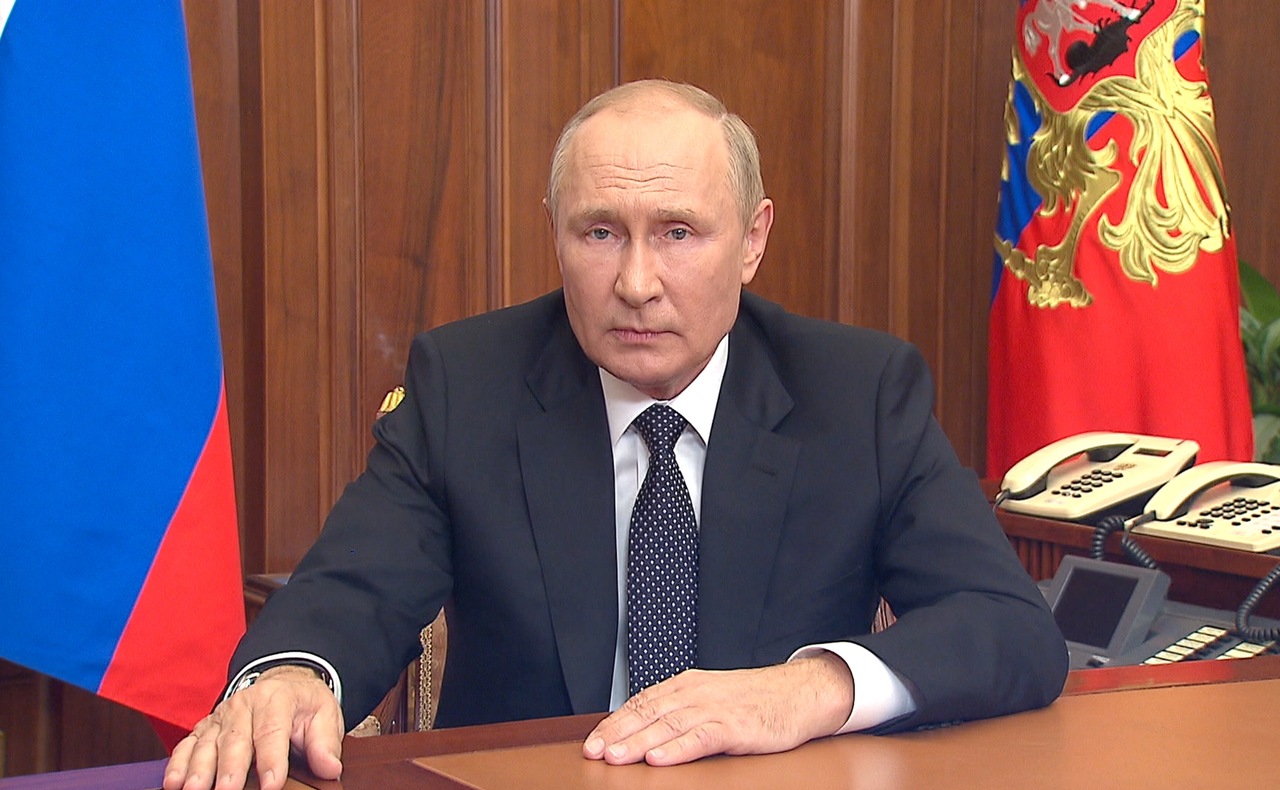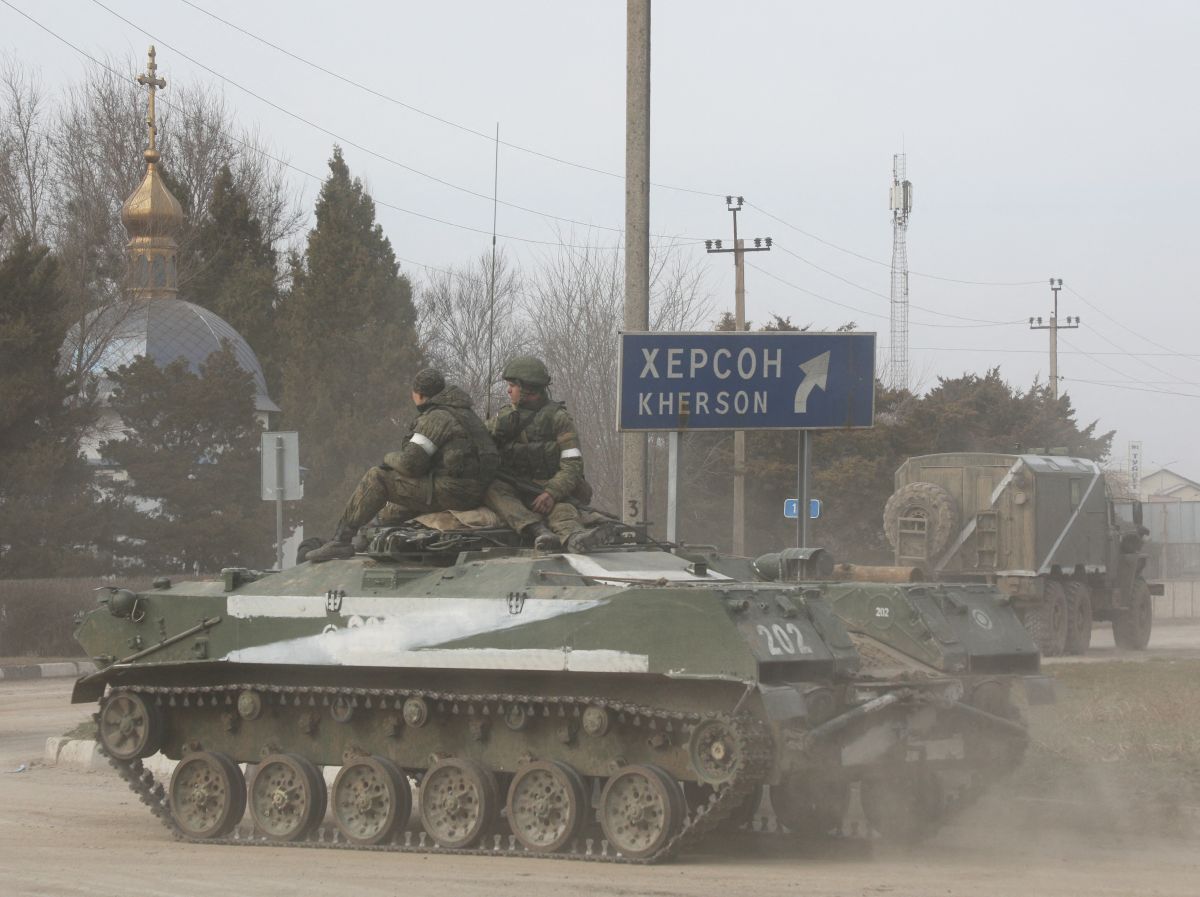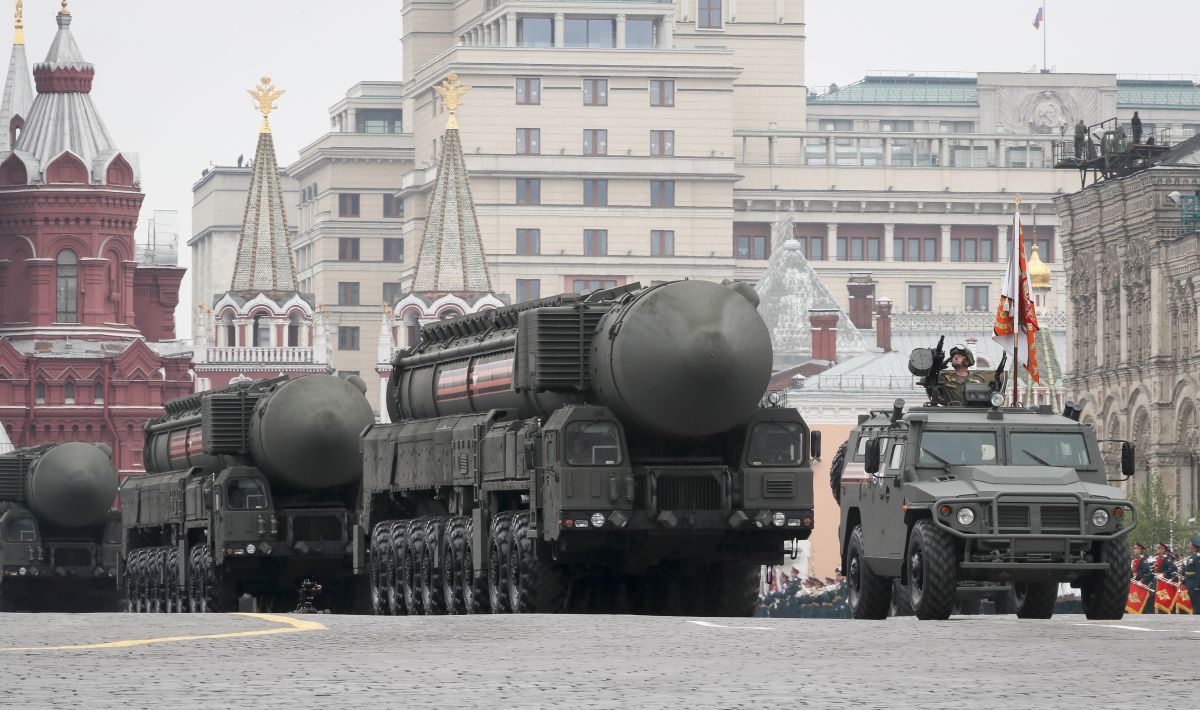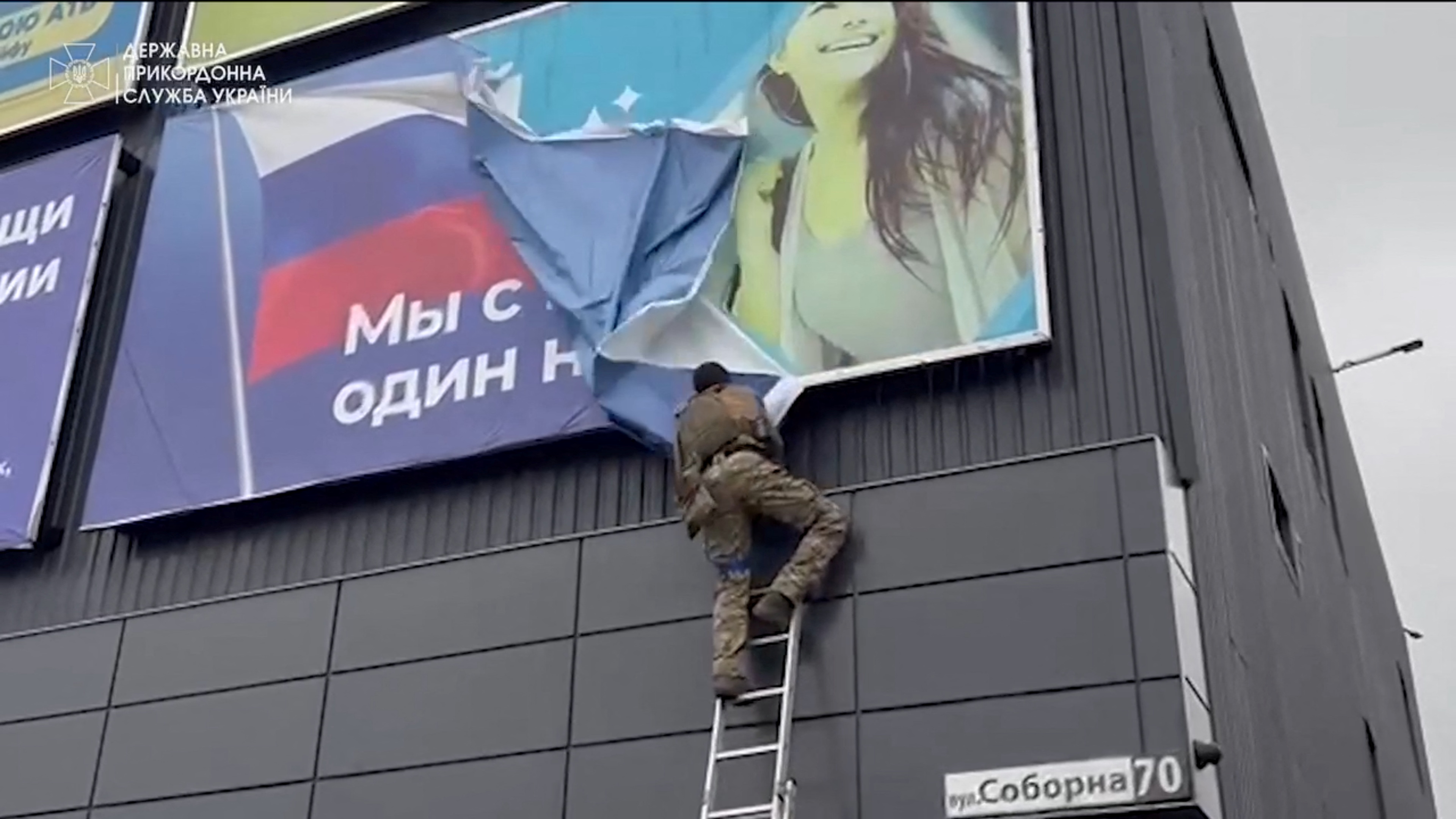Russia Introduces Partial Mobilisation
On 21 September, Russia announced a partial mobilisation of about 300,000 reservists. The official reason is the need to “liberate” the four southeastern oblasts of Ukraine and, according to the Russian authorities, counter the growing threat posed by Western countries. This decision proves that Russia has exhausted its current ability to conduct military operations in Ukraine. In addition, significant problems in the training and provision of the called-up reservists are expected. Partial mobilisation in the coming months will not change the course of the war but will allow Russia to continue it.
 Kremlin Pool/ Russian Look/ FORUM
Kremlin Pool/ Russian Look/ FORUM
What did Vladimir Putin say in his speech about the mobilisation?
In a speech released on 21 September, Putin told Russians about the need to introduce partial mobilisation to help the inhabitants of four Ukrainian oblasts—Donetsk, Luhansk, Kherson and Zaporizhzhia—in “liberating” them from the “neo-Nazi regime” ruling Ukraine since the “armed coup” in 2014. He added that the Russian Armed Forces must also secure referenda in these areas to join them to Russia. Putin emphasised growing threats from Western countries (the U.S., the UK, and NATO), not only their support for Ukraine militarily but also “threats” against Russia and seeking its disintegration. Putin made it clear that in the event of a threat to Russia’s territorial integrity, Russia reserves the right to use all available means of defence, including the use of nuclear weapons, which is consistent with its nuclear doctrine. It was also a warning that after the four new oblasts join the country, Russia would treat the territory as its own.
What does the introduction of partial mobilisation mean?
Partial mobilisation was announced by a presidential decree of 21 September and applies to those in the reserves who have served in the Russian Armed Forces. Defence Minister Sergei Shoigu said that this would mean the call-up of 300,000 reservists. He also estimated the entire mobilisation potential of Russia at around 25 million people. The mobilisation will start with soldiers and non-commissioned officers under 35 years of age, junior officers under 50, majors, lieutenant colonels, and captains of the second and third ranks below age 55, and first-rank colonels and captains under the age of 60.
Those mobilised will be treated as contract soldiers. The president’s decree indicates three opt-outs from service—age, health, or imprisonment. Defence industry workers will have the right to defer service. The authorities of the Federation’s entities and the Council of Ministers of the Russian Federation will be responsible for the mobilisation.
Considering the problems of the Russian Armed Forces to date during the war in Ukraine, the greatest challenge may be the quality of training and equipment, as well as the need to properly equip the mobilised troops with uniforms and useable equipment, as well as appropriate supplies. The introduction of partial mobilisation will result in a progressive militarisation of the society and will enable the introduction of special solutions in the economy, especially in the defence industry, which has received priority in financing from the government.
What is Russia trying to achieve?
By introducing partial mobilisation, Russia wants to secure its ability to continue the war in Ukraine. It seeks to both gain staff reserves and to spur the armaments industry to provide the needed equipment. This decision indicates that Russia has serious problems with its so-called “special military operation” in its current form, that there are growing fears of Ukraine’s further military success, and that it is a response to Ukraine’s recent successful counter-offensive. It also proves that Russia has exhausted the possibilities of achieving the political goals set in February (including “demilitarisation” and “de-Nazification” of Ukraine, “liberation” of the Donbas population) with the forces dedicated to these tasks so far. By announcing a partial mobilisation, Putin also wants to intimidate Ukraine and Western countries with the spectre of a long-lasting war of high intensity, which could spill over to NATO countries, and thus discourage the Alliance from further supporting Ukraine.
What will be the consequences of partial mobilisation?
The introduction of partial mobilisation and the indication by Putin and Shoigu that NATO, which they argue “commands the entire operation” and supports the Ukrainian Armed Forces with equipment, is responsible for the military successes of Ukraine proves that the Russian authorities have abandoned the propaganda of success and not only recognise the defeat of their forces in Ukraine but also are acknowledging them publicly. This decision is assumed to be of significant psychological importance and, in the face of purported increasing threats, to consolidate Russian society around the authorities. In practice, it may turn out to be politically risky and cause an increase in social discontent in Russia resulting both from the lack of will to serve and fight in Ukraine, and from the country’s growing economic problems. Mobilisation and training will take at least several months, so the reservists will not change the situation on the battlefield in the near future. Thus, it will be more and more difficult for the Russian authorities to justify in propaganda the measures they have taken. In response to the mobilisation announcement, Western states should increase military and financial aid to Ukraine. This will be the most appropriate response to the Russian actions, which amounts to blackmailing mainly NATO countries to force them to change their current policy, thanks to which Ukraine has maintained its sovereignty.





